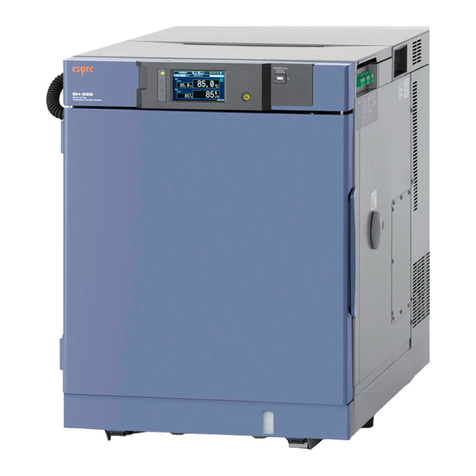
Criterion Series Benchtop User’s Manual
1
TABLE OF CONTENTS
Introduction ...................................................................................................................................................1
1. Precautions in Usage...............................................................................................................................3
1. Precautions in Usage...............................................................................................................................3
1.1. Substances Which Should Not Be Placed Inside the Equipment ....................................................3
1.2. KEEP OUT of the Chamber..............................................................................................................4
1.3. Specimen Protection (Safety Devices).............................................................................................5
1.3.1. Safety Device Setting Example.................................................................................................6
1.4. Disposing of the Chamber................................................................................................................8
1.5. Other Precautions.............................................................................................................................9
1.6. Global Warming Potential of Refrigerants......................................................................................10
2. Overview ................................................................................................................................................11
2.1. About the Criterion Series ..............................................................................................................11
2.2. Temperature (& Humidity) Control and Instrumentation.................................................................12
2.2.1. Temperature (& Humidity) Control ..........................................................................................12
2.2.2. Watlow Instrumentation...........................................................................................................13
3. Names and Functions of Parts...............................................................................................................15
3.1. Chamber.........................................................................................................................................15
3.1.1. Front........................................................................................................................................15
3.1.2. Left Side ..................................................................................................................................16
3.1.3. Right Side................................................................................................................................17
Table 3.3 Right Side Parts..................................................................................................................17
3.1.4. Test Area (Size 1 chamber) ....................................................................................................18
3.2. Instrumentation Panel.....................................................................................................................19
3.2.1. Instrumentation Panel ..............................................................................................................19
4.1. Installation.......................................................................................................................................21
4.1.1. Installation Site Check..............................................................................................................21
4.2. Power Supply Work........................................................................................................................22
4.2.1. Primary Power Supply Requirements ......................................................................................22
4.2.2. Primary Power Supply Connections.........................................................................................23
4.3. Drainage.........................................................................................................................................24
4.4. Humidity Water Supply (BTL and BTX models only)......................................................................25
Removal of the Water Level Regulator Protection Material...............................................................25
4.4.1. Water Supply Installation..........................................................................................................25
4.4.2. Water Consumption Rate.........................................................................................................26
4.4.3. Water Level Setting..................................................................................................................26
4.4.3.1. Checking Water Level in the Wick Pan.................................................................................26





























